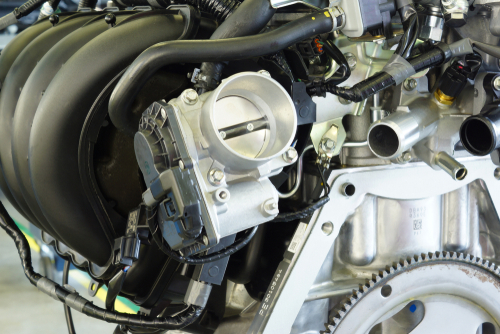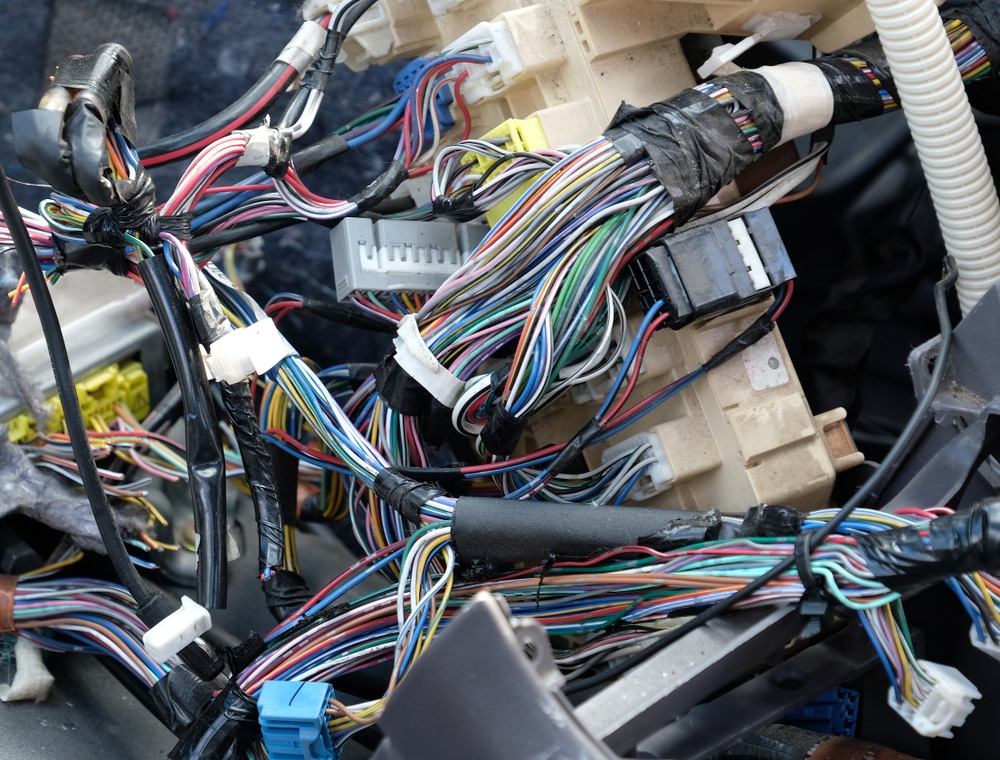When your car’s check engine light comes on, it can be a real head-scratcher. But fear not, gear heads!
Today we’re diving into the mysterious world of the P0034 code.
This pesky diagnostic trouble code indicates a low voltage in your turbocharger or supercharger bypass valve control circuit, which can lead to reduced engine performance and poor fuel economy.

Ever wonder why your turbocharged ride isn’t giving you that satisfying whoosh of power? It might be due to this sneaky little code.
The P0034 code affects the boost pressure control, which is crucial for squeezing every ounce of power out of your engine.
Without proper control, your turbo might as well be a fancy paperweight under the hood.
Don’t worry though, you’ve come to the right place to get your boost back on track.
We’ll help you understand what’s going on with your turbo system and how to get it purring like a kitten again.
So buckle up, and let’s take a turbocharged journey through the world of P0034!
Key Takeaways
- P0034 indicates a low voltage issue in the turbocharger bypass valve circuit, affecting engine performance
- Common symptoms include reduced power, poor fuel economy, and an illuminated check engine light
- Diagnosing and fixing P0034 often involves checking wiring, sensors, and the bypass valve itself
Understanding the Turbocharger System

Ever felt like your car could use a little extra oomph? That’s where turbochargers come in, folks!
These nifty devices are like steroids for your engine, pumping it up with more power than you can shake a stick at.
A turbocharger works by using exhaust gases to spin a turbine, which in turn compresses incoming air.
This compressed air is then forced into the engine’s cylinders, allowing for more fuel to be burned and creating more power.
It’s like giving your engine a big ol’ lungful of fresh mountain air!
Now, you might be wondering about that bypass valve.
This little gizmo is crucial for controlling boost pressure.
When you ease off the gas, it opens up to release excess pressure, preventing your turbo from going haywire.
But what happens when things go south? Well, that’s where our friend P0034 comes in.
This pesky code pops up when there’s a problem with the turbocharger bypass valve control circuit.
It’s like your car is trying to tell you, “Hey buddy, we’ve got a situation down here!”
Remember, a happy turbo means a happy engine.
So keep an ear out for any unusual whistling noises or sudden loss of power. Your turbocharged steed will thank you for it!
Diagnosing the P0034 Trouble Code
Got a P0034 code lighting up your dash? Don’t sweat it!
Let’s roll up our sleeves and get to the bottom of this turbocharger bypass valve mystery.
We’ll start with some quick checks and then dive into the nitty-gritty if needed.
Initial Checks
First things first, pop the hood and give your engine bay a once-over.
Look for any disconnected, cracked, or collapsed vacuum lines. These sneaky culprits can often trigger the P0034 code.
Next, grab your trusty OBD-II scanner and clear that pesky code.
Start her up and see if it comes back. If it does, you might need to dig a little deeper.
Check your boost pressure sensor. This little gadget can throw a wrench in the works if it’s not playing nice.
A quick visual inspection might reveal obvious damage or loose connections.
Advanced Diagnostic Procedures
Time to get technical!
Grab your digital volt/ohmmeter and let’s test that turbocharger bypass valve control circuit.
You’re looking for any signs of shorts, opens, or high resistance.
Check the resistance of the bypass valve itself. If it’s not within specs, you might have found your culprit.
Don’t forget to inspect the wiring harness for any signs of damage or corrosion.
Still stumped? It might be time to break out the oscilloscope.
Check the pulse width modulation signal from the PCM to the bypass valve. An irregular signal could point to a PCM issue.
Common Symptoms and Causes

When your turbocharger starts acting up, it’s like your car is telling you it needs a hug.
Let’s dive into the telltale signs and culprits behind that pesky P0034 code.
Symptoms of a P0034 Code
You might notice your ride feeling a bit sluggish, like it’s had one too many cheeseburgers.
The check engine light will likely be glowing on your dashboard, looking at you like a disappointed parent.
Your engine might sound like it’s trying to whisper instead of roar, especially when you’re trying to show off at a stoplight. That’s because you’re dealing with a low boost condition, my friend.
You could also experience:
- Poor acceleration (0-60 in… eventually)
- Reduced fuel economy (your wallet will feel this one)
- Rough idling (like your car had too much coffee)
Potential Causes for P0034
Now, let’s talk about why your turbo’s throwing a tantrum.
The most common culprit is a faulty bypass valve.
This little gadget’s job is to regulate boost pressure, and when it goes bad, it’s like leaving the front door open on a windy day.
An intake air leak could also be the troublemaker. It’s like trying to drink a milkshake with a hole in your straw – frustrating and ineffective.
Other potential causes include:
- Damaged wiring or connectors (electricity and cars, always a fun combo)
- A malfunctioning PCM (the car’s brain is having a moment)
- Vacuum line issues (because your car needs its alone time too)
Remember, these issues don’t fix themselves.
So, if you’re hearing weird noises or feeling a lack of oomph, it might be time to give your trusty mechanic a call.
Solving the Circuit Puzzle

Cracking the code on a P0034 issue requires some detective work. You’ll need to don your mechanic’s hat and get ready to dive into the electrical maze of your turbocharger system.
Electrical Troubleshooting
First things first, you’ll want to check those electrical connectors for any signs of corrosion or damage.
It’s like playing “Where’s Waldo?” but with wires. Look for loose connections – they’re sneaky culprits that love to cause trouble.
Got a multimeter handy? Good, because you’re going to need it.
Check the continuity of the wiring harness. It’s like following a treasure map, but instead of gold, you’re looking for a steady electrical signal.
Don’t forget to inspect the fuses and relays related to the turbocharger system. These little guys can throw a wrench in the works if they decide to call it quits.
Bypass Valve Control Circuit Insights
Now, let’s talk about that bypass valve control circuit.
It’s the unsung hero of your turbocharger system, regulating boost pressure like a boss. When it’s feeling low, your engine might too.
Check the resistance of the bypass valve solenoid. If it’s out of spec, you might have found your troublemaker.
The PCM (Powertrain Control Module) could also be the puppet master behind this electrical drama.
Use a scan tool to monitor the bypass valve control circuit’s voltage. If it’s lower than your bank account after a shopping spree, you might need to have a chat with your PCM.
The Impact on Vehicle Performance
Buckle up, folks! When your car throws a P0034 code at you, it’s not just for giggles. This little troublemaker can wreak havoc on your ride’s performance.
First off, you might notice your fuel economy taking a nosedive.
It’s like your car suddenly developed a drinking problem – guzzling gas like there’s no tomorrow.
Your engine’s power output? Let’s just say it’ll be as impressive as a wet firecracker.
You’ll feel like you’re driving through molasses, especially when you’re trying to accelerate.
But wait, there’s more! The P0034 code can cause:
- Rough idling (your car will shake like it’s doing the mambo)
- Stalling (hope you like unexpected stops!)
- Black exhaust smoke (your car’s way of saying “Help!”)
If you ignore this issue, you’re playing Russian roulette with your turbocharger or supercharger.
These fancy air pumps don’t take kindly to neglect.
Your ECM and PCM? They’re working overtime, trying to compensate for the malfunctioning bypass valve.
It’s like asking your grandma to run a marathon – not ideal.
Frequently Asked Questions
Turbocharger bypass valve issues can be tricky, but don’t worry! We’ve got answers to your burning questions about the P0034 code across different vehicle makes.
Let’s dive into some common scenarios and potential fixes.
What steps should I take to rectify a P0034 error code in a Ford vehicle?
First, check those wires! The P0034 code often points to a low voltage in the turbocharger bypass control circuit.
Inspect the connections and look for any frayed or damaged wiring.
If the wiring looks good, it’s time to test the bypass valve itself. A faulty valve might need replacing.
Remember, Ford engines can be finicky, so don’t be afraid to consult your trusty manual.
Can a P0034 trouble code in a Chevy vehicle be an indication of a serious problem?
It could be, but don’t panic just yet! While the P0034 code suggests a problem with your Chevy’s turbocharger bypass valve control circuit, it’s not always a major issue.
Sometimes it’s as simple as a loose connection or a bit of corrosion. However, if left unchecked, it could lead to poor engine performance or even damage.
Better safe than sorry – get it checked out!
What common issues could trigger a P0034 code in a Nissan?
Ah, Nissans – they love to keep us on our toes! A P0034 code in your Nissan could be triggered by a few culprits.
Faulty wiring is a common troublemaker, so give those connections a good once-over.
Another possibility is a malfunctioning boost pressure bypass control valve. These valves can wear out over time, especially if you’re a fan of spirited driving.
Don’t forget to check for vacuum leaks too – they’re sneaky little buggers!
Are there DIY fixes for the P0034 code on a Chevy Cruze, or is a mechanic visit unavoidable?
Good news, DIY warriors! There are some things you can try before handing over your hard-earned cash to a mechanic.
Start by clearing the code with an OBD-II scanner. Sometimes that’s all it takes!
If the code comes back, inspect the wiring and connections. Clean any corrosion you find.
If you’re feeling brave, you can test the bypass valve with a multimeter. But if these steps don’t do the trick, it might be time to call in the pros.
How can I resolve a P0034 error in a Chevy Malibu without breaking the bank?
Wallet-friendly fixes are music to our ears! Start with the basics – check and clean all electrical connections related to the turbocharger bypass valve. A little dielectric grease can work wonders.
If that doesn’t cut it, consider replacing the bypass valve yourself. It’s not rocket science, and you’ll save a bundle on labor costs.
Just be sure to get the right part for your Malibu’s specific year and engine.
What does the P0034 error code reveal about the health of my Toyota’s turbocharger system?
Think of the P0034 code as your Toyota’s way of saying, “Hey, something’s not quite right with my turbo!”
Specifically, it’s telling you there’s a low voltage issue in the bypass valve control circuit.
This could mean anything from a simple wiring problem to a failing bypass valve. While it doesn’t necessarily spell doom for your turbocharger, it’s definitely a warning sign.
Ignoring it could lead to poor performance or even damage to your turbo system. Time for a checkup!
